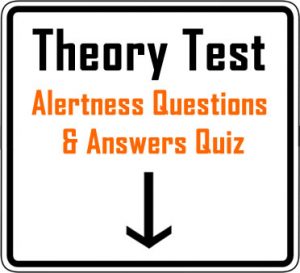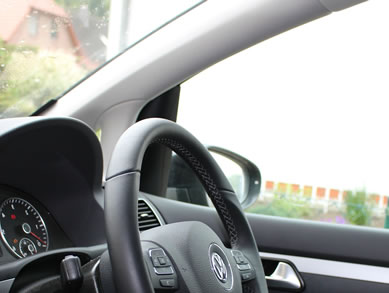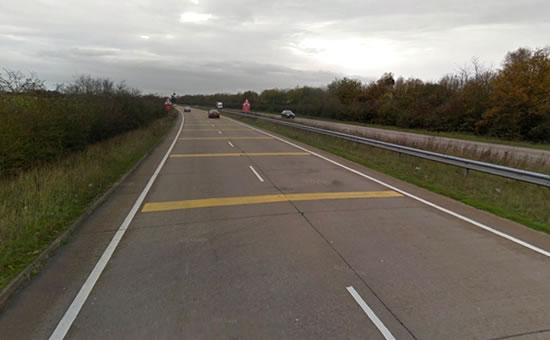Section 1 of 14 of the DVSA driving theory test covers alertness whilst driving. Driving alertness covers other road users including cyclists and pedestrians, being aware of road signs and markings and weather conditions and how it can affect your vehicle.
The theory test also covers mobile phones and obstructions that can affect a drivers alertness. Covered in this section is revision for the Alertness section of the theory test along with a mock revision theory test with multiple choice questions specifically for the alertness section. As this is revision and not a test, answers are provided immediately to enable you to revise as you go through the quiz.
The theory test alertness practice quiz can be found at the bottom of this page, but first we are going to briefly revise the information under the ‘Alertness’ category that will be important for the official DVSA theory test. Links are provided in this section for further reading but are not required for revising this category.
Other Road Users
You must always be aware on how your actions impact on others. This starts with moving off. Just before moving off, always check your mirrors and blind spot. If necessary, signal your intentions by using your indicators. This is commonly known as mirror, signal, manoeuvre, abbreviated to M.S.M.
Overtaking

The theory test includes questions on overtaking. Your alertness impacts on the observations you do before overtaking. Before overtaking, ensure that you are
- looking out for vehicles that are coming towards you up ahead
- confident there are no junctions up ahead which vehicles may pull out of whilst you are overtaking
- confident that no bends or dips in the road which may obscure approaching vehicles
- confident that the road is wide enough ahead
- confident that it is in fact legal to overtake (any road signs or markings that prohibit overtaking)
Before doing anything potentially hazardous such as overtaking, think – is it safe, legal and necessary?
Being Seen or Heard
Accidents can easily occur if you are not clearly seen. Always turn on dipped headlights when light levels fall. For example when it starts to get dark, during heavy rain or fog. There are also occasions where you may need to use your horn to be heard. If for example you are driving on a narrow road and going over a hump bridge. This will allow another motorist to hear you.
Anticipation and Planning
Being alert allows you to anticipate and plan ahead. Anticipation and planning is one of the most important aspects of driving. Anticipating potential hazards means you can plan for developing and actual hazards keeping you and other road users safer.
Tiredness Whilst Driving
Driving on motorways and dual carriageways can be tiring. Always plan your journey to include breaks. It can be harder to remain alert whilst driving at night. To avoid tiredness, take breaks, drink tea or coffee and keep cool air circulating through the vehicle.
Theory Test Alertness Revision Quiz
Take the theory test quiz for the category of ‘Alertness’, which number 1 of the 14 categories. The quiz provides 10 questions with the answers being provided immediately after you have answered.
Quiz-summary
0 of 10 questions completed
Questions:
- 1
- 2
- 3
- 4
- 5
- 6
- 7
- 8
- 9
- 10
Information
Take the theory Test Alertness Practice Revision Quiz
Certain questions may require more than one answer.
You have already completed the quiz before. Hence you can not start it again.
Quiz is loading...
You must sign in or sign up to start the quiz.
You have to finish following quiz, to start this quiz:
Results
0 of 10 questions answered correctly
Your time:
Time has elapsed
Categories
- Not categorized 0%
- 1
- 2
- 3
- 4
- 5
- 6
- 7
- 8
- 9
- 10
- Answered
- Review
-
Question 1 of 10
1. Question
In which of these situations might it be dangerous to overtake?
Correct
Incorrect
Unless you are totally confident that you can see ahead well enough to complete the overtaking manoeuvre, stay back and wait.
Hint
Unless you are totally confident that you can see ahead well enough to complete the overtaking manoeuvre, stay back and wait.
-
Question 2 of 10
2. Question
Select Two Answers
Long motorway journeys can make you tired. If you begin to feel sleepy, you should:
Correct
Incorrect
Always plan long journeys to include rest stops. Being long straight roads, motorways in particular can make you tired. Caffeinated drinks and fresh air help to reduce tiredness.
Hint
Always plan long journeys to include rest stops. Being long straight roads, motorways in particular can make you tired. Caffeinated drinks and fresh air help to reduce tiredness.
-
Question 3 of 10
3. Question
You should only use a mobile phone when:
Correct
Incorrect
Except in a genuine emergency, using a mobile phone for making or receiving calls or text messaging whilst driving is illegal as it distracts your attention away from the road. Locate a safe and legal place to stop.
-
Question 4 of 10
4. Question
Mark Three Answers
You are parked at the side of the road. Before moving off, you should:
Correct
Incorrect
Before moving off, you must use all mirrors and look over your should into the road-side blind spot. Signal your intentions to move off if it may help other road users or pedestrians.
Hint
Before moving off, you must use all mirrors and look over your should into the road-side blind spot. Signal your intentions to move off if it may help other road users or pedestrians.
-
Question 5 of 10
5. Question
Mark Two Answers
Windscreen pillars can obstruct your view. With this in mind, what should you take particular care with:
Correct
Incorrect
Windscreen pillars can obscure other road users such as cyclists, motorcyclists and pedestrians crossing the road especially when turning into or pulling out of a junction or traveling round bends.
Hint
Windscreen pillars can obscure other road users such as cyclists, motorcyclists and pedestrians crossing the road especially when turning into or pulling out of a junction or traveling round bends.
-
Question 6 of 10
6. Question
In terms of driving, what is a blind spot?
Correct
Incorrect
Blind spots are areas that are not seen in your mirrors from behind. They vary in size depending on the vehicle types and mirrors. Before making a change of direction, such as changing lanes, it if important that you check over your shoulder in the direction you intend on moving. This enables you to check the blind spot to ensure no vehicle or cyclists are there before moving.
Hint
Blind spots are areas that are not seen in your mirrors from behind. They vary in size depending on the vehicle types and mirrors. Before making a change of direction, such as changing lanes, it if important that you check over your shoulder in the direction you intend on moving. This enables you to check the blind spot to ensure no vehicle or cyclists are there before moving.
-
Question 7 of 10
7. Question
Up ahead you spot traffic lights which have remained on green. As you approach, you should:
Correct
Incorrect
Remaining alert allows you to anticipate and plan ahead. If the lights have been on green for a long time, there’s a good chance they will change as you approach them. Be prepared to stop.
-
Question 8 of 10
8. Question
Correct
Incorrect
Transverse rumble strips are raised lines painted across the road that act as an audible alert aid to inform a driver that they must slow down. Typically used before hazardous junctions or roundabouts.
Hint
Transverse rumble strips are raised lines painted across the road that act as an audible alert aid to inform a driver that they must slow down. Typically used before hazardous junctions or roundabouts.
-
Question 9 of 10
9. Question
You have reached the end of the road and are waiting to turn right. Obscuring your view are parked cars. How should you proceed?
Correct
Incorrect
Junctions can often be difficult to see if the road is clear due to trees, parked cars, long grass etc. These are called closed junctions (see types of junctions for further information). Edge out of the junction slowly whilst quickly and constantly looking left to right.
Hint
Junctions can often be difficult to see if the road is clear due to trees, parked cars, long grass etc. These are called closed junctions (see types of junctions for further information). Edge out of the junction slowly whilst quickly and constantly looking left to right.
-
Question 10 of 10
10. Question
Up ahead, you see a hazard. What should be the first thing you do?
Correct
Incorrect
Whilst driving, if you see a hazard up ahead, you should always use your mirrors first to see how your actions may affect those behind. For example, if the hazard is likely to cause you to slow down, if a driver is following you very closely, you may wish to slow down sooner and more slowly to provide them with more time to react.
THEORY TEST CATEGORIES
- Theory Test Attitude Revision and Test
- Theory Test Documents Revision and Test
- Theory Test Hazard Awareness Revision and Test


